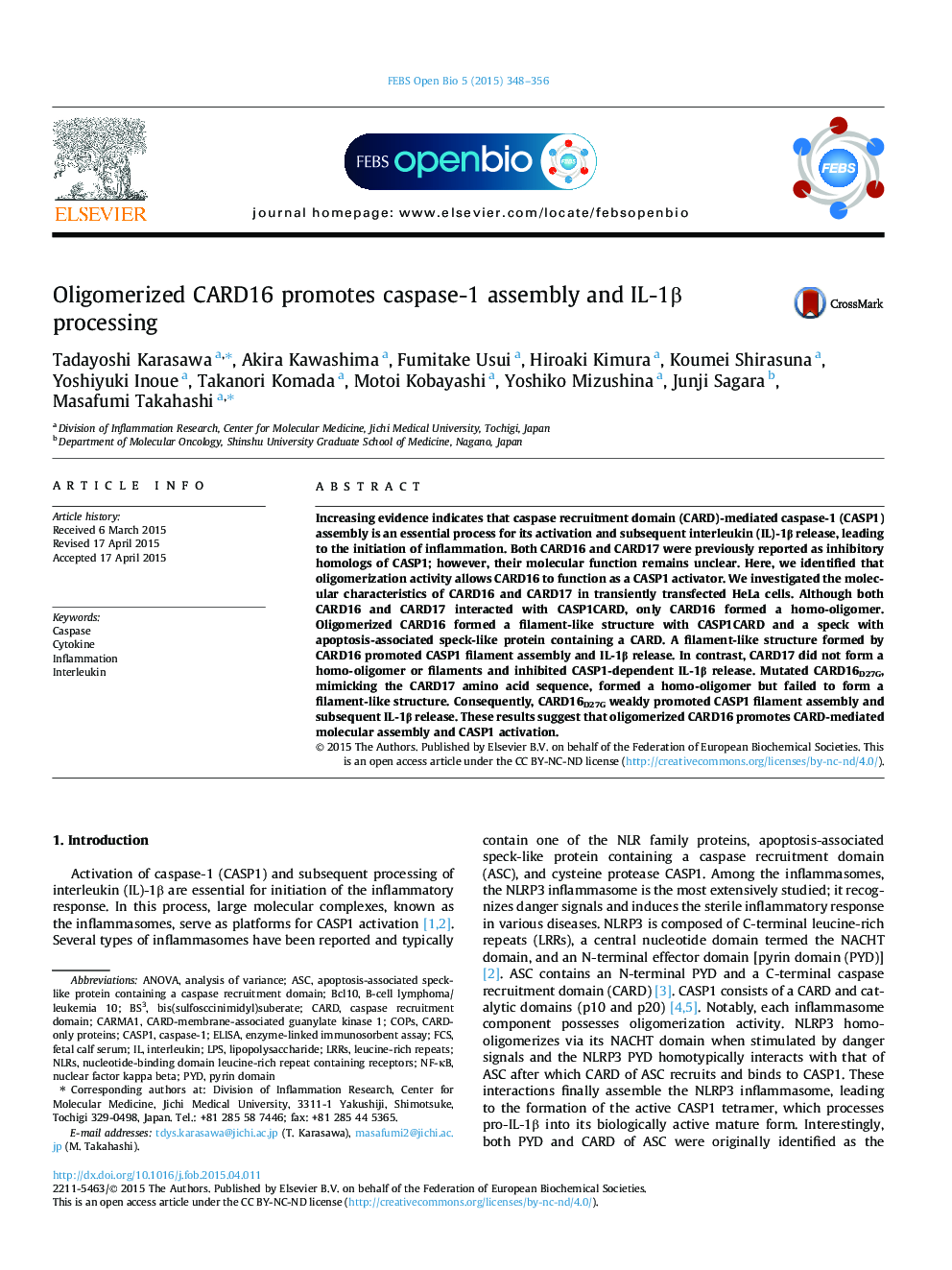| Article ID | Journal | Published Year | Pages | File Type |
|---|---|---|---|---|
| 1981594 | FEBS Open Bio | 2015 | 9 Pages |
•CARD16 is the most abundant CARD-only protein in hematopoietic cells.•Unlike CARD17, CARD16 oligomerizes to form a filament-like structure.•The filament-like structure formed by CARD16 promotes caspase 1 (CASP1) assembly.•CASP1-dependent IL-1β processing is enhanced by CARD16.•CARD16 colocalizes in ASC-speck by interacting with ASC.
Increasing evidence indicates that caspase recruitment domain (CARD)-mediated caspase-1 (CASP1) assembly is an essential process for its activation and subsequent interleukin (IL)-1β release, leading to the initiation of inflammation. Both CARD16 and CARD17 were previously reported as inhibitory homologs of CASP1; however, their molecular function remains unclear. Here, we identified that oligomerization activity allows CARD16 to function as a CASP1 activator. We investigated the molecular characteristics of CARD16 and CARD17 in transiently transfected HeLa cells. Although both CARD16 and CARD17 interacted with CASP1CARD, only CARD16 formed a homo-oligomer. Oligomerized CARD16 formed a filament-like structure with CASP1CARD and a speck with apoptosis-associated speck-like protein containing a CARD. A filament-like structure formed by CARD16 promoted CASP1 filament assembly and IL-1β release. In contrast, CARD17 did not form a homo-oligomer or filaments and inhibited CASP1-dependent IL-1β release. Mutated CARD16D27G, mimicking the CARD17 amino acid sequence, formed a homo-oligomer but failed to form a filament-like structure. Consequently, CARD16D27G weakly promoted CASP1 filament assembly and subsequent IL-1β release. These results suggest that oligomerized CARD16 promotes CARD-mediated molecular assembly and CASP1 activation.
